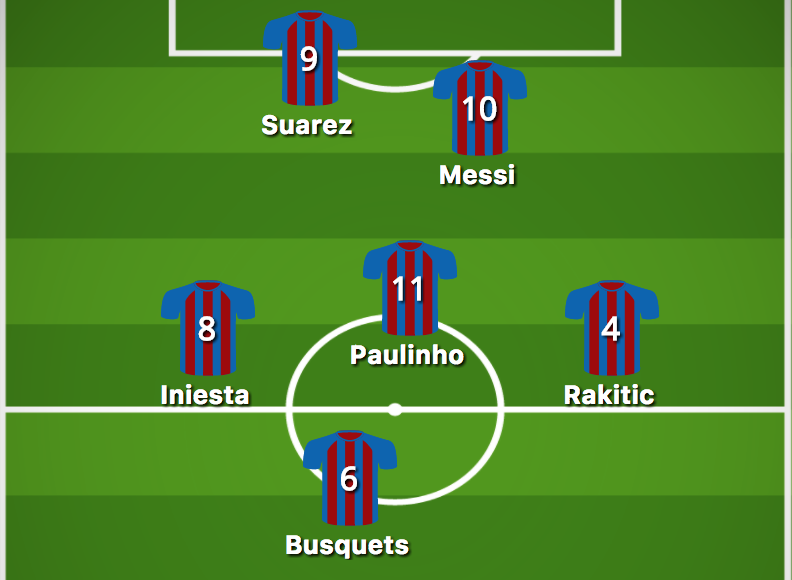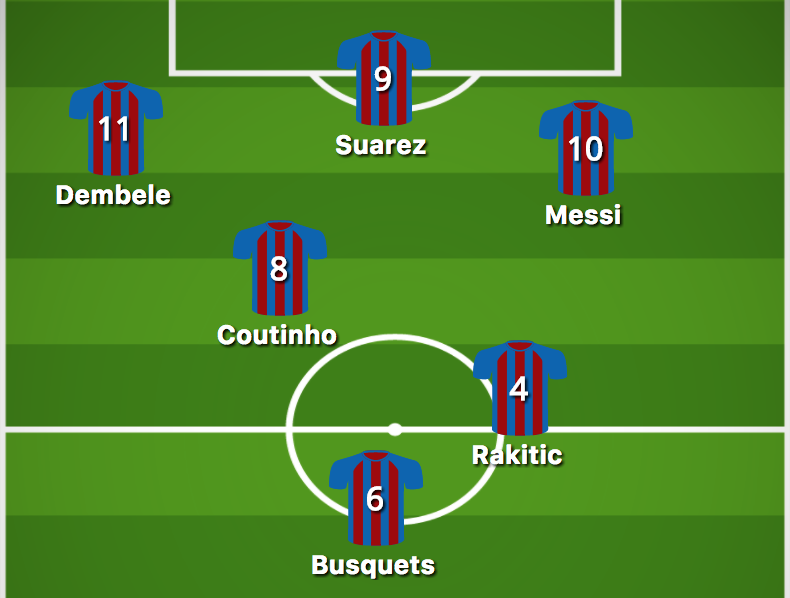How will Philippe Coutinho, the Iniesta heir, fit at Barcelona?

Back when news of Barcelona’s interest in Philippe Coutinho initially broke – back when he became the top target amid turmoil, when fans called for directors’ heads and uncertainty swirled – the question was binary. It was either-or. Was Coutinho, if and when he arrived, the Neymar replacement? Or the Andres Iniesta heir?
At the time, there was no clear answer.
When Neymar’s $268 million check cleared in early August, Barca had a gaping hole on the left wing. It also had a midfield maestro in decline, 33 years old, with only 13 La Liga starts to his name the year before. To complicate matters, it had a new manager, Ernesto Valverde; Valverde had not committed to a specific system or formation. Just as uncertainty swirled behind the scenes, there were plenty of unknowns on it.
Five months later – five months later than one club hoped, and five months earlier than the other did – Coutinho is a Barcelona player. The storm surrounding his new club has subsided. And the question is no longer binary, because the binary question has been answered.
But within the answer, there are more questions. Intriguing questions. Questions that 99 percent of soccer clubs would love to ruminate on, but questions nonetheless.
Coutinho is the Iniesta heir. That’s according to the noises coming out of the club. It’s also according to logic. The other seat, the Neymar replacement seat, has already been taken. Barcelona filled it with 20-year-old French winger Ousmane Dembele over the summer.
But just because Coutinho is the Iniesta heir doesn’t mean he is midfielder and not winger. His value is a function of his talent and versatility. Just like Iniesta, he can exert influence on a game no matter where he is in the attacking half. Just like Iniesta, he can play off the left, or as the forward-most playmaker in midfield, or even deeper.
The last five months at Camp Nou have extended the list of possibilities. Valverde began his reign by adhering to the 4-3-3 of the recent past. But, spurred on by Dembele’s injury, he has adopted a 4-4-2 that better suits his personnel. It’s more of a 4-1-3-2, with Sergio Busquets in his customary holding role, Paulinho pushing on in front of him, and Iniesta and Ivan Rakitic to either side.

Coutinho could slot into the Iniesta spot, or the Rakitic spot. He could replace Paulinho, provided adjustments were made to account for the incumbent’s defensive capabilities relative to the newcomer’s.
The big uncertainty is how much Valverde’s formation switch was fueled by necessity. On one hand, the current shape has worked. Barca is unbeaten in all competitions since Real Madrid’s Super Cup drubbing. On the other, with Dembele returning and Coutinho arriving, a 4-3-3 no longer has glaring deficiencies.
In fact, on paper, it’s more enticing.

But both possibilities, and others, are enticing. That, again, is part of the appeal of Coutinho. He could excel on the left side of a front three, or even on the right. He could dazzle at the tip of a midfield diamond, or on the right or left of that diamond. Or as one of two No. 10s in a single-pivot three-man midfield. Or as the No. 10 in a double-pivot configuration, or a traditional 6-8-10 trio.
In that sense, he’s the ideal Iniesta heir.
To be clear, he is not Iniesta. The Spaniard is the greatest player of the past 10 years not named Messi or Ronaldo. He’s unique, and irreplaceable.
Coutinho shares some of his qualities, but not all. The Brazilian has the extensive passing range and variety. He has the bag full of feints, ball skills and dribbling tricks. He’s quick, and shifts his body weight extremely well to slither away from defenders. He can operate in tight spaces.
The main difference isn’t talent, it’s tendency. Coutinho’s one maddening flaw is his love affair with the 25-yard shot. The tendency produces wondergoals. It’s also inefficient. Coutinho can strike a ball extraordinarily well. But he’d often be better off picking a cutting through-ball, something Iniesta did (and does) as well as anyone.
His top priority, therefore, is improving his decision-making. If he can, it doesn’t matter where he plays. At Liverpool, whether he was the nominal left winger or attacking midfielder, he’d often find himself in similar areas of the field. One of the following heat maps is from a game in which he was one of the front three. The other is from a game in which he played behind the front three. They’re almost indistinguishable.

What matters is that Coutinho plays “the Barca way.” That’s why the La Liga leaders bought him. “He’s a player with qualities like ours,” Iniesta said last month. “I don’t see him as competition for me, but as a step forward for the club.”
It’s a necessary step forward. A youthful step for an aging squad. And one that, even at such a hefty price, has a high floor. Because Coutinho is the rare player whose positionlessness isn’t a problem, it’s an asset. He doesn’t “fit,” because he doesn’t have to “fit” to succeed. He gives a manager flexibility, a team unpredictability, and oh yeah, a bit of quality, too.
– – – – – – –
Henry Bushnell covers global soccer, and occasionally other ball games, for Yahoo Sports. Have a tip? Question? Comment? Email him at henrydbushnell@gmail.com or follow him on Twitter @HenryBushnell.


